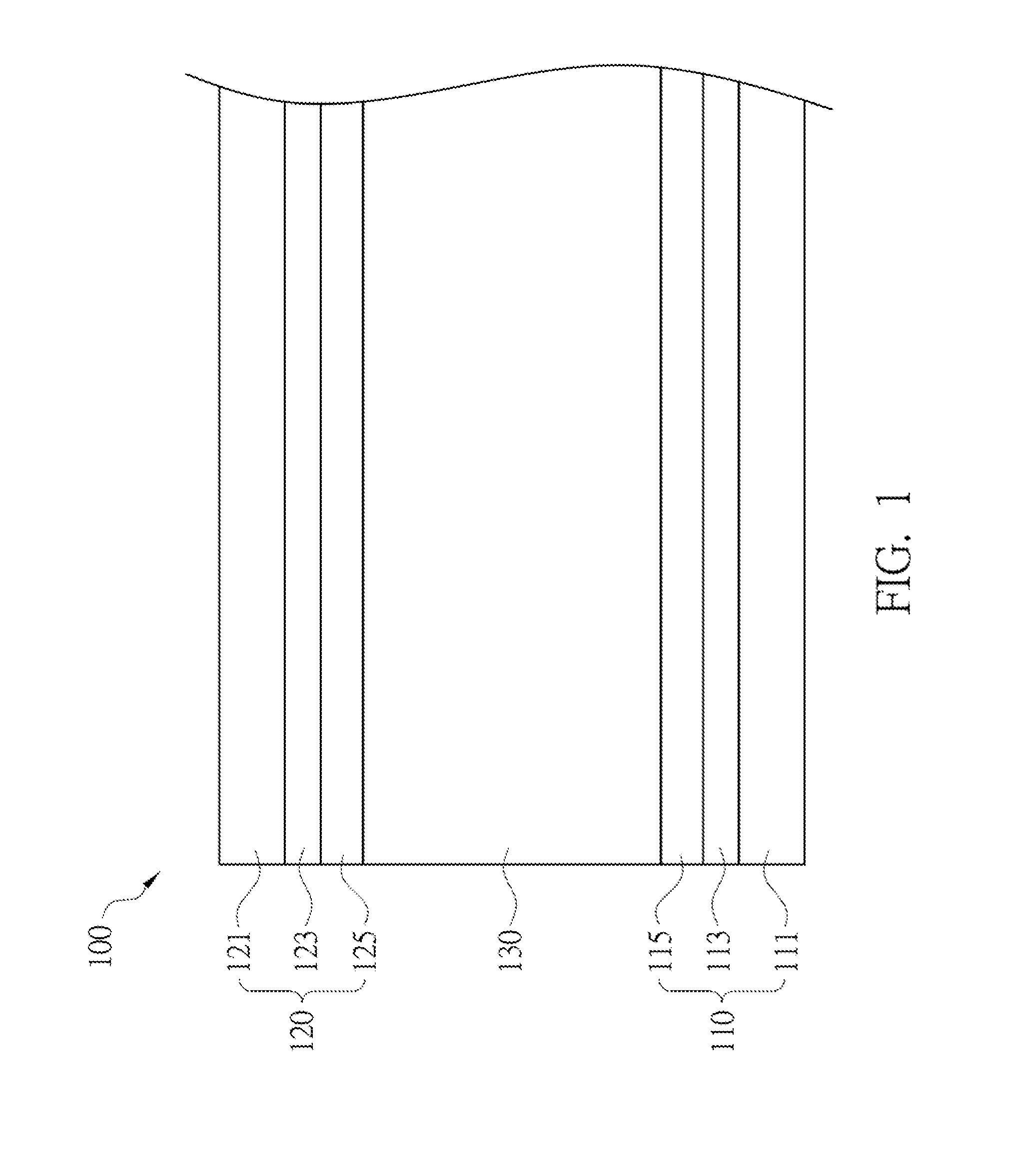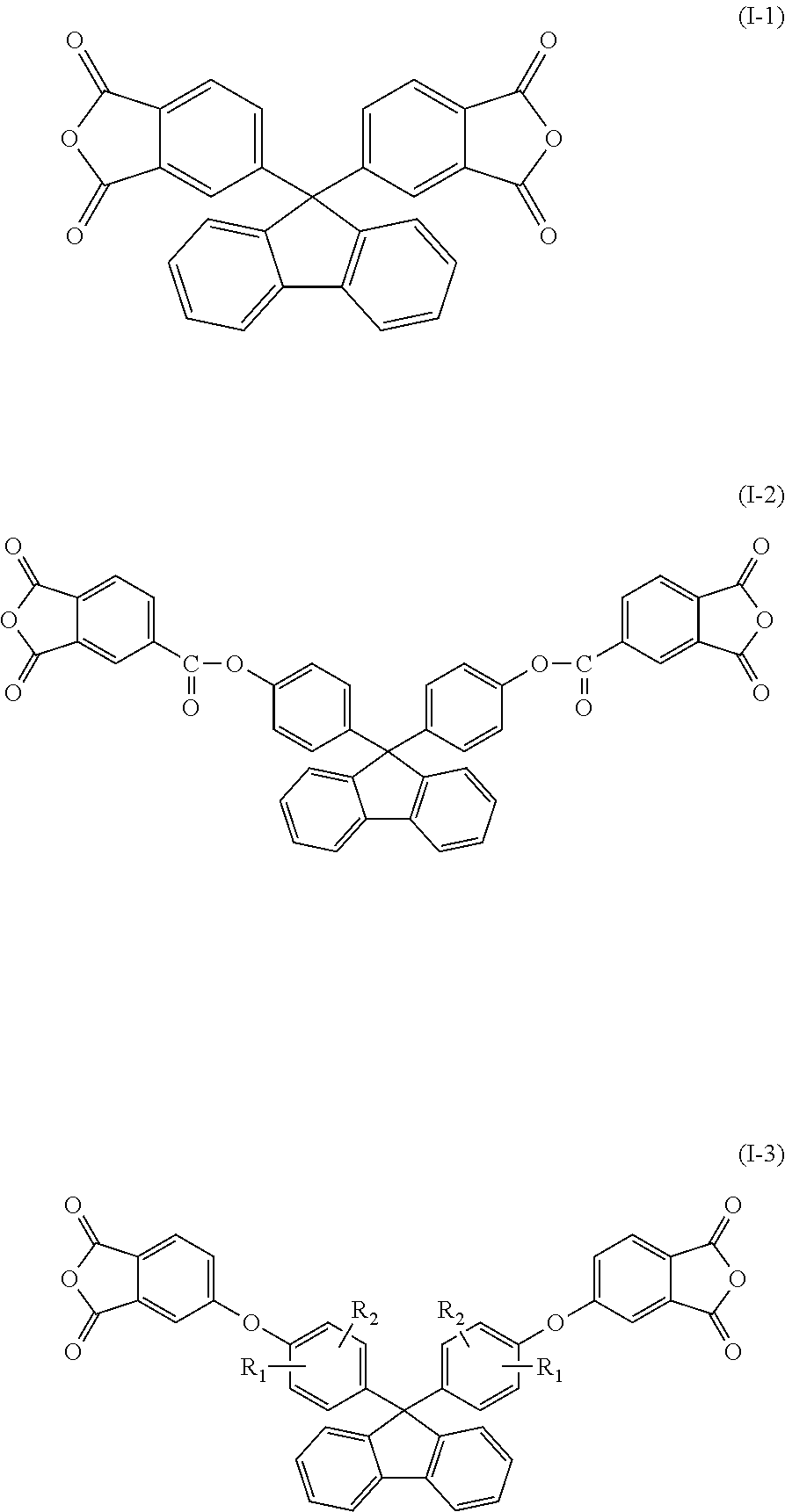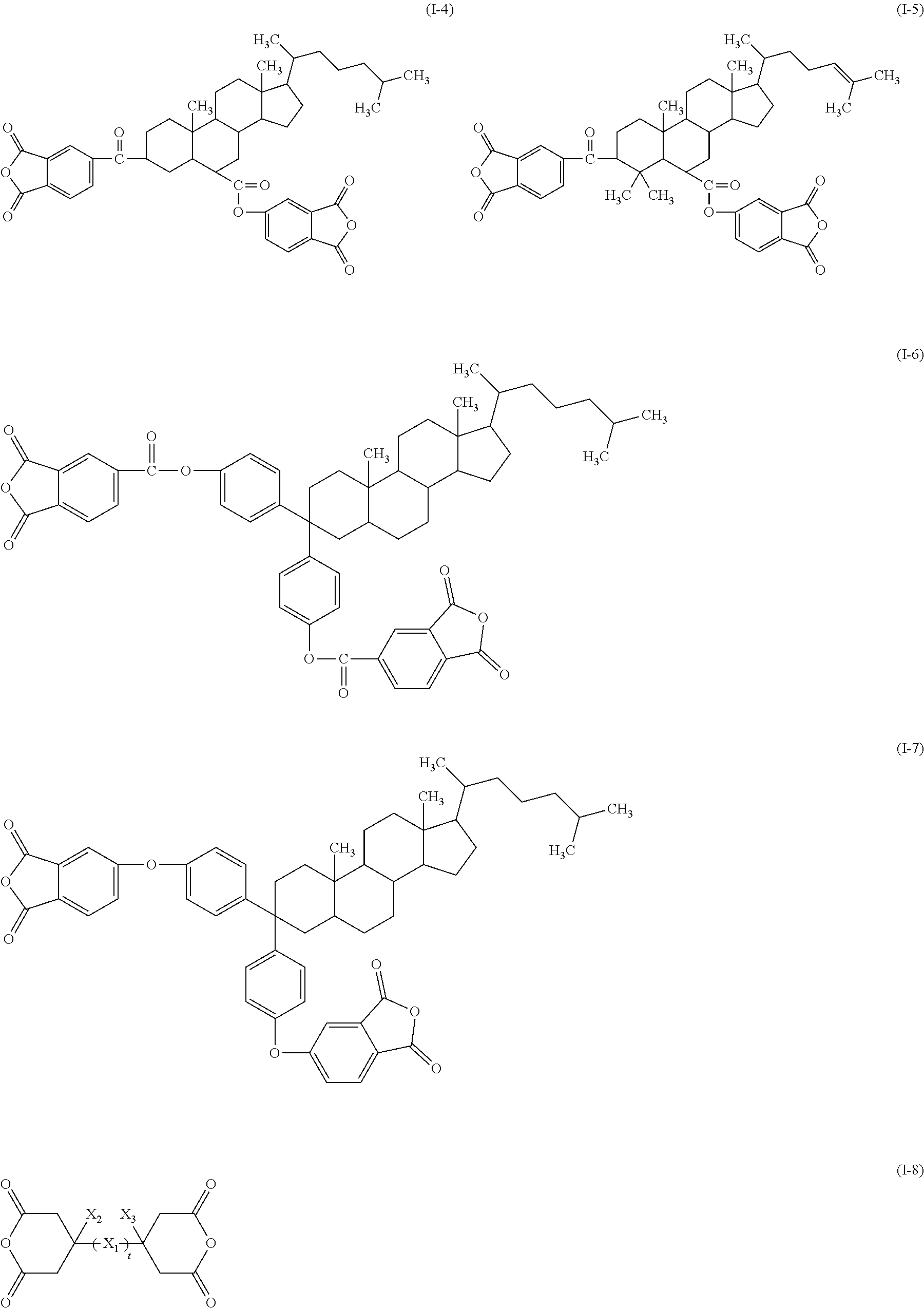Liquid crystal alignment agent, liquid crystal alignment film and liquid crystal display element having thereof
a technology which is applied in the field of liquid crystal alignment agent, liquid crystal alignment film and liquid crystal display element having thereof, can solve the problems of image sticking, slow relaxation of charge accumulation, and easy induced image sticking of liquid crystal display element, so as to improve the defect, slow relaxation of charge accumulation, and bad process stability
- Summary
- Abstract
- Description
- Claims
- Application Information
AI Technical Summary
Benefits of technology
Problems solved by technology
Method used
Image
Examples
synthesis example a-1-1
[0096]A 500 ml four-necked conical flask equipped with a nitrogen inlet, a stirrer, a condenser and a thermometer was purged with nitrogen. Then, 0.188 g (0.0005 mole) of the 1-octadecoxy-2,4-aminobenzene (hereinafter abbreviated as b-1-1), 9.83 g (0.0495 mole) of 4,4′-diaminodiphenylmethane (hereinafter abbreviated as b-2-1), and 80 g of N-methyl-2-pyrrolidinone (hereinafter abbreviated as NMP) were added. Next, 26.8 g (0.04 mole) of 9,9-bis[4-(3,4-dicarboxyphenoxyl)-2-methylphenyl]fluorene dianhydride (hereinafter abbreviated as a-1-1), 2.18 g (0.01 mole) of pyromellitic anhydride (hereinafter abbreviated as a-2-1) and 20 g of NMP were added and left to react for 2 hours at room temperature. After the reaction was completed, the reacting solution was poured into 1500 ml of water to precipitate a polymer. The polymer obtained after filtering was repeatedly washed using methanol and filtered thrice, and then placed into a vacuum oven, where drying was carried out at 60° C., thereby ...
synthesis example a-1-2
TO A-1-5 AND COMPARATIVE EXAMPLES A-3-5 AND A-3-6
[0097]Synthesis Examples A-1-2 to A-1-5 and Comparative Examples A-3-5 and A-3-6 were practiced with the same method as in Synthesis Example A-1-1 by using various kinds or amounts of the components for the polyamic acid. The formulations and detection results thereof were listed in Table 1 and Table 2 rather than focusing or mentioning them in details.
synthesis example a-2-1
[0098]A 500 ml four-necked conical flask equipped with a nitrogen inlet, a stirrer, a heater, a condenser and a thermometer was purged with nitrogen. Then, 0.188 g (0.0005 mole) of b-1-1, 9.83 g (0.0495 mole) of b-2-1 and 80 g of NMP were added. Next, 26.8 g (0.04 mole) of a-1-1, 2.18 g (0.01 mole) of a-2-1 and 20 g of NMP were added and left to react for 6 hours at room temperature. And then, 97 g of NMP, 2.55 g of acetic anhydride and 19.75 g of pyridine were added at 60° C. and left to stir for 2 hours for imidization reaction. After the reaction was complete, the reacting solution was pored into 1500 ml of water to precipitate a polymer. The polymer obtained after filtering was repeatedly washed using methanol and filtered thrice, and then placed into a vacuum oven, where drying was carried out at 60° C., thereby obtaining a polyimide (A-2-1). An imidization ratio of the resulted polyimide (A-2-1) was evaluated according to the following evaluation method, and the result thereof...
PUM
| Property | Measurement | Unit |
|---|---|---|
| Fraction | aaaaa | aaaaa |
| Fraction | aaaaa | aaaaa |
| Substance count | aaaaa | aaaaa |
Abstract
Description
Claims
Application Information
 Login to View More
Login to View More - R&D
- Intellectual Property
- Life Sciences
- Materials
- Tech Scout
- Unparalleled Data Quality
- Higher Quality Content
- 60% Fewer Hallucinations
Browse by: Latest US Patents, China's latest patents, Technical Efficacy Thesaurus, Application Domain, Technology Topic, Popular Technical Reports.
© 2025 PatSnap. All rights reserved.Legal|Privacy policy|Modern Slavery Act Transparency Statement|Sitemap|About US| Contact US: help@patsnap.com



